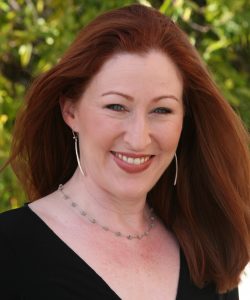Guest Blog By Kimberly Lilley, CIRMS, CMCA, EBP
On Thursday, July 13, 2023, the Department of Insurance (CDI) held a public workshop regarding catastrophe modeling and how it might be used to help with assessing risk in California. Currently, most states use catastrophe modeling to inform the rates that they charge. However, California Insurance Code section 1861.07 requires that all information used in ratemaking be disclosed to the public. Catastrophe modelers make money by developing a process that they consider to be superior so that the carriers in both the traditional and reinsurance market will purchase this information from them. If the full process were disclosed then (hypothetically) anyone might steal their intellectual property and make money from it without having to have spent the money, energy, and time needed to develop the product. The CDI hearing was to receive input on this concept and how we might use this important tool while maintaining consumer protections.
CAI-CLAC was represented at the workshop and was able to address some of the following:
- This is a long game. We need to build something sustainable.
- Part of a successful long game is accurately modeling for losses in the future… not just based on historical data. Historical data does not take into account that storms are increasing in intensity and that we continue to build more structures that can be damaged and cost money to rebuild. That means historical data will always underestimate the rate needed to be charged to offset the claims that will/may need to be paid.
- Profitability isn’t just how much a carrier charges, it’s balanced with how much they pay out on claims (and may pay out on claims in the future). If a carrier cannot rate appropriately for risk, in other words, in a way that keeps them solvent, then they cannot participate in the market.
- The idea of creating one catastrophe model for all carriers in California to use doesn’t seem like something that would encourage carriers to stay engaged in the state. Risk modeling and catastrophe modeling are different for each carrier for a reason. They are businesses that want to provide the best product they can because, in a free market, that is the way to succeed. The one catastrophe model for California concept would not create the long-term, sustainable solutions we’re looking for.
- As stated above, all tools used for rate-making must be disclosed to the public. In other words, we want transparency. However, the transparency that people seem to actually ask for includes information about how to get a better rate or even an insurance policy at all. What needs to change, they ask, that they have control over, that will allow them to pay less for insurance, or have options in policies they wouldn’t have otherwise? They do not ask about what algorithms are being used. They ask about the data being considered and particularly the data that might impact them. Catastrophe modeling companies seem to be happy to disclose the data being used. The SAFER from Wildfires Regulations that were already introduced by the DOI could go a long way to help with the transparency that folks are actually asking for, as well as giving homeowners discounts for the mitigation work they do. We hope that these regulations can be expanded to impact condominiums to a larger degree.
- Mitigation is a huge part of that long-term, sustainable solution. We can make a difference in how much is getting paid out on claims if we prevent things from burning in the first place, which will ultimately positively affect rates. Focusing on how to keep the claims payouts low can help create an atmosphere in which carriers can participate.
- Another way to invite participation is the treatment of wildfire as a separate, catastrophic peril. By treating “fire” and “wildfire” as individual and separate causes of loss, more opportunities are opened for carriers – again, a possible tool to keep them in the market. Wildfire deductibles could be implemented for admitted carriers. By permitting the admitted markets to utilize wildfire deductibles, more protection could be afforded to the reinsurers and would serve to reduce the need for extreme levels of additional premium.
While catastrophe modeling is a complicated and detailed piece of the insurance puzzle in California, shifting to being able to plan appropriately for the increased severity of storms seems like a logical step in helping the California insurance market move from a “reactive” market toward a “responsive” market.
If you haven’t already done so, we urge you to take a moment to sign up for CAI-CLAC email updates to stay informed. You can also follow us on LinkedIn, Facebook, Twitter and YouTube for real-time updates on legislative news, resources, event updates, or legislative action. You can also continue to share your story on our Current Campaigns page.
 Kimberly Lilley, CIRMS, CMCA, EBP is the Director of Business Development for Berg Insurance Agency and the Chair of the CAI-CLAC Insurance Task Force and may be reached at kimberly@berginsurance.com
Kimberly Lilley, CIRMS, CMCA, EBP is the Director of Business Development for Berg Insurance Agency and the Chair of the CAI-CLAC Insurance Task Force and may be reached at kimberly@berginsurance.com
